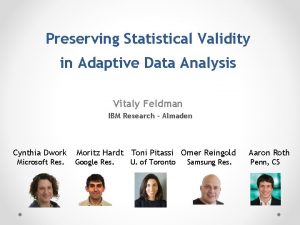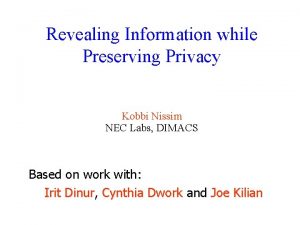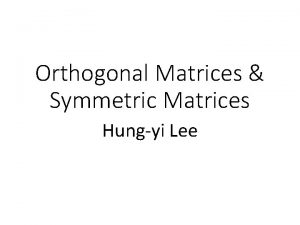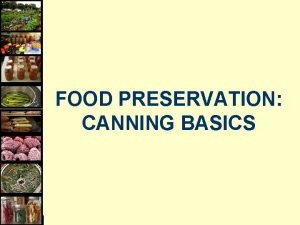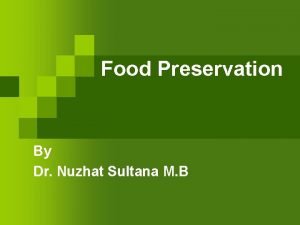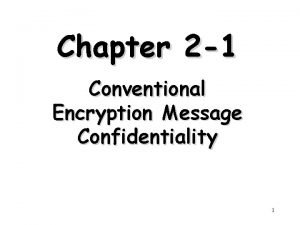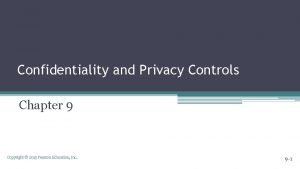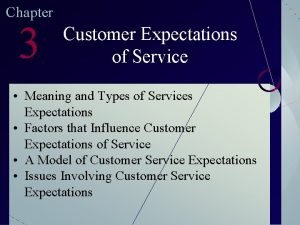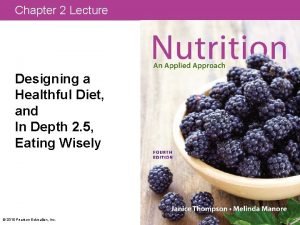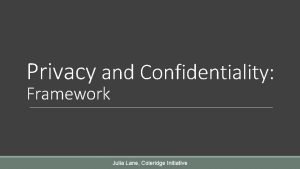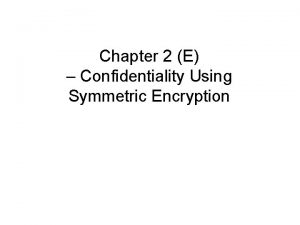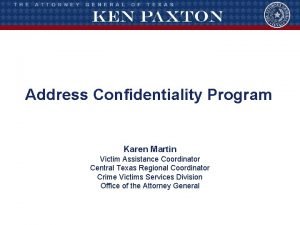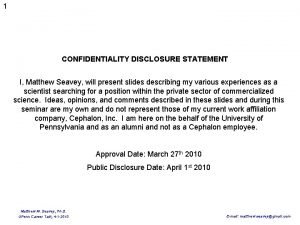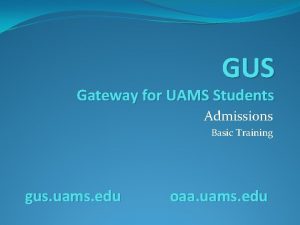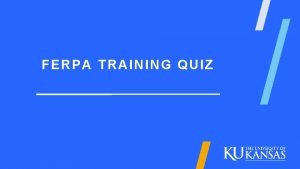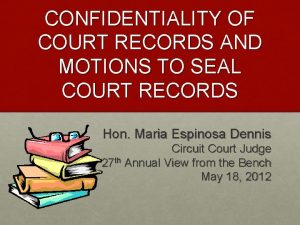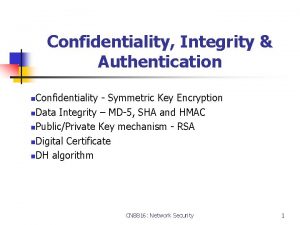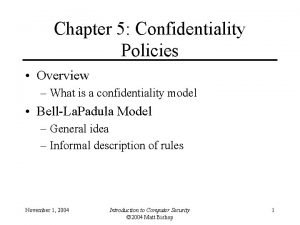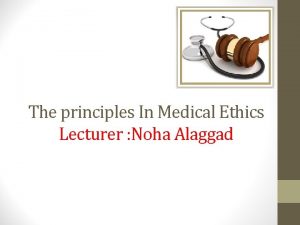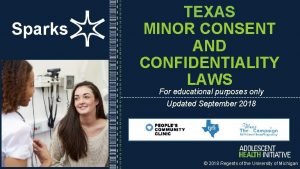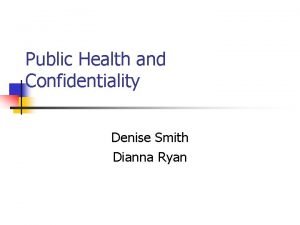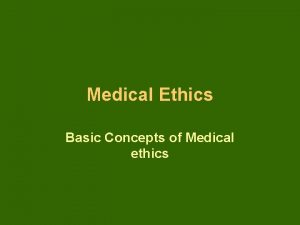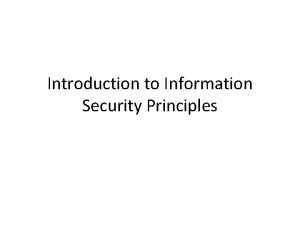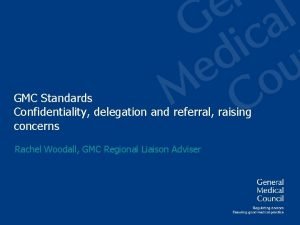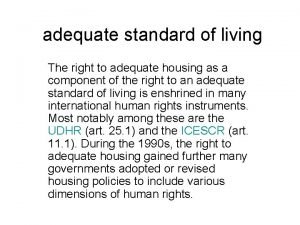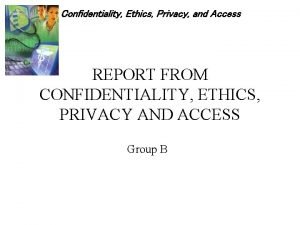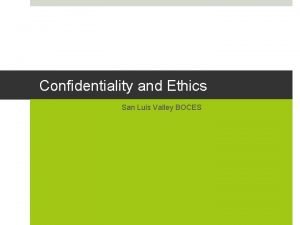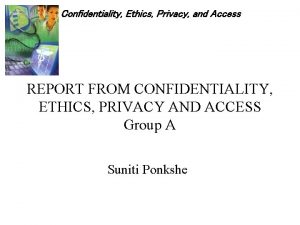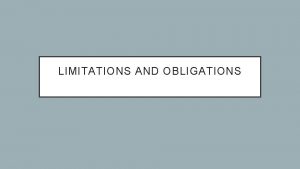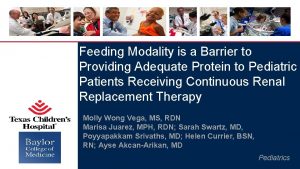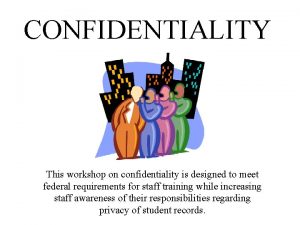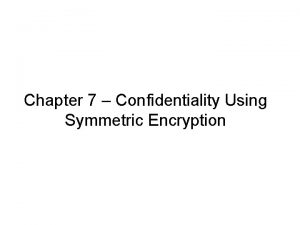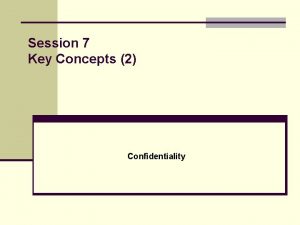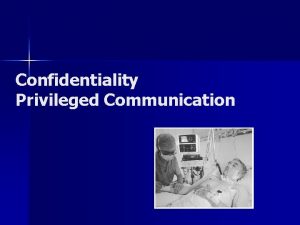Preserving Confidentiality AND Providing Adequate Data for Statistical



















![Ex. 2: Czech Autoworkers • Suppose released margins are [ADE][ABCE][BF] : – – Correspond Ex. 2: Czech Autoworkers • Suppose released margins are [ADE][ABCE][BF] : – – Correspond](https://slidetodoc.com/presentation_image/46db76a16a9b18239c0c5b07b159751b/image-20.jpg)
![Bounds for [BF][ABCE][ADE] 21 Bounds for [BF][ABCE][ADE] 21](https://slidetodoc.com/presentation_image/46db76a16a9b18239c0c5b07b159751b/image-21.jpg)




![NLTCS Search Results • Decomposable frontier model: {[1, 2, 3, 4, 5, 7, 12], NLTCS Search Results • Decomposable frontier model: {[1, 2, 3, 4, 5, 7, 12],](https://slidetodoc.com/presentation_image/46db76a16a9b18239c0c5b07b159751b/image-26.jpg)










- Slides: 36

Preserving Confidentiality AND Providing Adequate Data for Statistical Modeling Stephen E. Fienberg Department of Statistics Center for Automated Learning and Discovery Center for Computer and Communications Security Carnegie Mellon University Pittsburgh, PA, U. S. A. 1

Overview • Background and some fundamental abstractions for disclosure limitation. – Statistical users want more than to retrieve a few numbers. • Results on bounds for table entries. • Uses of Markov bases for exact distributions and perturbation of tables. • Links to log-linear models, and related statistical theory and methods. 2

R-U Confidentiality Map Disclosure Risk Original Data Apply DL to Get Released Data Maximum Tolerable Risk No Data Utility (Duncan, et al. 2001) 3

NISS Prototype Query System • For k-way table of counts. • Queries: Requests for marginal tables. • Responses: Yes--release; No; (and perhaps “Simulate” and then release). • As released margins cumulate we have increased information about table entries. • Margins need to be consistent ==> possible simulated releases get highly constrained. 4

Confidentiality Concern • Uniqueness in population table cell count of “ 1”. • Uniqueness allows intruder to match characteristics in table with other data bases that include the same variables plus others to learn confidential information. – Assuming data are reported without error! • Identity versus attribute disclosure. 5

Fundamental Abstractions • Query space, Q, with partial ordering: – Elements can be marginal tables, conditionals, kgroupings, regressions, or other data summaries. – Released set: R(t), and implied Unreleasable set: U(t). – Releasable frontier: maximal elements of R(t). – Unreleasable frontier: minimal elements of U(t). • Risk and Utility defined on subsets of Q. – Risk Measure: identifiability of small cell counts. – Utility: reconstructing table using log-linear models. – Release rules must balance risk and utility: • R-U Confidentiality map. • General Bayesian decision-theoretic approach. 6

Why Marginals? • Simple summaries corresponding to subsets of variables. • Traditional mode of reporting for statistical agencies and others. • Useful in statistical modeling: Role of loglinear models. • Collapsing categories of categorical variables uses similar DL methods and statistical theory. 7

Example 1: 2000 Census • U. S. decennial census “long form” – – 1 in 6 sample of households nationwide. 53 questions, many with multiple categories. Data measured with substantial error! Data reported after application of data swapping! • Geography – 50 states; 3, 000 counties; 4 million “blocks”. – Release of detailed geography yields uniqueness in sample and at some level in population. • American Factfinder releases various 3 -way tables at different levels of geography. 8

9

Example 2: Risk Factors for Coronary Heart Disease • 1841 Czech auto workers Edwards and Havanek (1985) • 26 table • population data – “ 0” cell – population unique, “ 1” – 2 cells with “ 2” 10

Example 2: The Data 11

Example 3: NLTCS • National Long Term Care Survey – 20 -40 demographic/background items. – 30 -50 items on disability status, ADLs and IADLs, most binary but some polytomous. – Linked Medicare files. – 5 waves: 1982, 1984, 1989, 1994, 1999. • We’ve been working with 216 table, collapsed across several waves of survey, with n=21, 574. Erosheva (2002) Dobra, Erosheva, & Fienberg(2003) 12

Two-Way Fréchet Bounds • For 2 2 tables of counts{nij} given the marginal totals {n 1+, n 2+} and {n+1, n+2}: • Interested in multi-way generalizations involving higher-order, overlapping margins. 13

Bounds for Multi-Way Tables • k-way table of non-negative counts, k 3. – Release set of marginal totals, possibly overlapping. – Goal: Compute bounds for cell entries. – LP and IP approaches are NP-hard. • Our strategy has been to: – Develop efficient methods for several special cases. – Exploit linkage to statistical theory where possible. – Use general, less efficient methods for residual cases. • Direct generalizations to tables with noninteger, non-negative entries. 14

Role of Log-linear Models? • For 2 2 case, lower bound is evocative of MLE for estimated expected value under independence: – Bounds correspond to log-linearized version. – Margins are minimal sufficient statistics (MSS). • In 3 -way table of counts, {nijk}, we model logs of expectations {E(nijk)=mijk}: • MSS are margins corresponding to highest order terms: {nij+}, {ni+k}, {n+jk}. 15

Graphical & Decomposable Log-linear Models • Graphical models: defined by simultaneous conditional independence relationships – Absence of edges in graph. Example 2: Czech autoworkers Graph has 3 cliques: [ADE][ABCE][BF] • Decomposable models correspond to triangulated graphs. 16

MLEs for Decomposable Log-linear Models • For decomposable models, expected cell values are explicit function of margins, corresponding to MSSs (cliques in graph): – For conditional independence in 3 -way table: • Substitute observed margins for expected in explicit formula to get MLEs. 17

Multi-way Bounds • For decomposable log-linear models: • Theorem: When released margins correspond to those of a decomposable model: – Upper bound: minimum of relevant margins. – Lower bound: maximum of zero, or sum of relevant margins minus separators. – Bounds are sharp. Fienberg and Dobra (2000) 18

Multi-Way Bounds (cont. ) • Example: Given margins in k-way table that correspond to (k-1)-fold conditional independence given variable 1: • Then bounds are 19
![Ex 2 Czech Autoworkers Suppose released margins are ADEABCEBF Correspond Ex. 2: Czech Autoworkers • Suppose released margins are [ADE][ABCE][BF] : – – Correspond](https://slidetodoc.com/presentation_image/46db76a16a9b18239c0c5b07b159751b/image-20.jpg)
Ex. 2: Czech Autoworkers • Suppose released margins are [ADE][ABCE][BF] : – – Correspond to decomposable graph. Cell containing population unique has bounds [0, 25]. Cells with entry of “ 2” have bounds: [0, 20] and [0, 38]. Lower bounds are all “ 0”. • “Safe” to release these margins; low risk of disclosure. 20
![Bounds for BFABCEADE 21 Bounds for [BF][ABCE][ADE] 21](https://slidetodoc.com/presentation_image/46db76a16a9b18239c0c5b07b159751b/image-21.jpg)
Bounds for [BF][ABCE][ADE] 21

Example 2 (cont. ) • Among all 32, 000+ decomposable models, the tightest possible bounds for three target cells are: (0, 3), (0, 6), (0, 3). – 31 models with these bounds! All involve [ACDEF]. – Another 30 models have bounds that differ by 5 or less (critical width) and these involve [ABCDE]. – Method used to search for “optimal” decomposable release also identifies [ABDEF] as potentially problematic. • Allows proper statistical test of fit for most interesting models. 22

More on Bounds • Extension for log-linear models and margins corresponding to reducible graphs. • For 2 k tables with (k-1) dimensional margins fixed (need one extra bound here and it comes from loglinear model theory: existence of MLEs). – Extend to general k-way case by looking at all possible collapsed 2 k tables. • General “shuttle” algorithm in Dobra (2002) works for all cases. – Also generates most special cases with limited extra computation. 23

Example 2: Release of All 5 -way Margins • Approach for 2 2 2 generalizes to 2 k table given (k-1)-way margins. • In 26 table, if we release all 5 -way margins: – Almost identical upper and lower values; they all differ by 1. – Only 2 feasible tables with these margins! • UNSAFE! 24

Example 3: NLTCS • 216 table of ADL/IADLs with 65, 536 cells: – 62, 384 zero entries; 1, 729 cells with count of “ 1” and 499 cells with count of “ 2”. – n=21, 574. – Largest cell count: 3, 853 ---no disabilities. • Used simulated annealing algorithm to search all decomposable models for “decomposable” model on frontier with max[upper bound – lower bound] >3. • Acting as if these were population data. 25
![NLTCS Search Results Decomposable frontier model 1 2 3 4 5 7 12 NLTCS Search Results • Decomposable frontier model: {[1, 2, 3, 4, 5, 7, 12],](https://slidetodoc.com/presentation_image/46db76a16a9b18239c0c5b07b159751b/image-26.jpg)
NLTCS Search Results • Decomposable frontier model: {[1, 2, 3, 4, 5, 7, 12], [1, 2, 3, 6, 7, 12], [2, 3, 4, 5, 7, 8], [1, 2, 4, 5, 7, 11], [2, 3, 4, 5, 7, 13], [3, 4, 5, 7, 9, 13], [2, 3, 4, 5, 13, 14], [2, 4, 5, 10, 13, 14], [1, 2, 3, 4, 5, 15], [2, 3, 4, 5, 8, 16]}. • Has one 7 -way and eight 6 -way marginals. 26

Perturbation Maintaining Marginal Totals w 1 w 2 w 3 w 4 v 1 +1 0 – 1 0 v 2 – 1 0 +1 0 v 3 0 0 v 4 0 0 • Perturbation distributions given marginals require 27 Markov basis for perturbation moves.

Perturbation for Protection • Perturbation preserving marginals involves a parallel set of results to those for bounds: – Markov basis elements for decomposable case requires only “simple” moves. (Dobra, 2002) – Efficient generation of Markov basis for reducible case. (Dobra and Sullivent, 2002) – Simplifications for 2 k tables (“binomials”). – Rooted in ideas from likelihood theory for log-linear models and computational algebra of toric ideals. 28

Some Ongoing Research • Queries in form of combinations of marginals and conditionals. • Inferences from marginal releases. • What information does the intruder really have? • Record linkage and matching. • Simplified cyclic perturbation distributions. • Computational algebraic statistics. 29

Summary • Some fundamental abstractions for disclosure limitation. • Results on bounds for table entries. • Parallels for Markov bases for exact distributions and perturbation of tables. • New theoretical links among disclosure limitation, statistical theory, and computational algebraic geometry. 30

The End • Most papers available for downloading at http: //www. niss. org http: //www. stat. cmu. edu/~fienberg/disclosure. html • Workshop on Computational Algebraic Statistics December 14 to 18, 2003, American Institute of Mathematics, Palo Alto, California http: //aimath. org/ARCC/workshops/compalgstat. html 31

Stochastic Perturbation Methods • Some methods well-developed in statistical literature: – Matrix masking, including adding noise – Post-randomization • Randomized response after data are collected – Multiple Imputation • Sampling from full posterior distribution – Data swapping and constrained cyclic perturbation • Key is full information on stochastic transformation for proper statistical inferences. 32

Exact Distribution of Table Given Marginals • Exact probability distribution for loglinear model given its MSS marginals: – Can generate distribution using Diaconis-Sturmfels (1998) MCMC approach using Markov basis. Fienberg, Makov, Meyer, Steele (2002) 33

Markov Basis “Moves” • Simple moves: – Based on standard linear contrasts involving 1’s, 0’s, and -1’s for embedded 2 l subtables. – For example, in 2× 2× 2 table, there is 1 move of form: • “Non-simple” moves: – Require combination of simple moves to reach extremal tables in convex polytope. 34

Three-way Illustration (k=3) Challenge: Scaling up approach for large k. 35

NISS Table Server: 6 -Way Table 36
 Preserving statistical validity in adaptive data analysis
Preserving statistical validity in adaptive data analysis Ecology preserving the animal kingdom
Ecology preserving the animal kingdom Chapter 8 preserving your credit
Chapter 8 preserving your credit Preserving your credit
Preserving your credit Revealing information while preserving privacy
Revealing information while preserving privacy Orthonormal matrix
Orthonormal matrix Style transfer
Style transfer Preserving food
Preserving food Purpose of preserving food
Purpose of preserving food Conventional encryption and message confidentiality
Conventional encryption and message confidentiality Confidentiality and privacy controls
Confidentiality and privacy controls Netiquette of confidentiality and respect
Netiquette of confidentiality and respect Difference between desired and adequate service
Difference between desired and adequate service Enduring service intensifiers
Enduring service intensifiers Serving size examples
Serving size examples Julia lane coleridge
Julia lane coleridge Confidentiality using conventional encryption
Confidentiality using conventional encryption Texas address confidentiality program
Texas address confidentiality program Matthew seavey
Matthew seavey Professional secrecy in medical ethics
Professional secrecy in medical ethics Potential tension between maintaining confidentiality
Potential tension between maintaining confidentiality Uams admissions
Uams admissions Safe schools training answers 2020 ferpa
Safe schools training answers 2020 ferpa Confidentiality ethical principle
Confidentiality ethical principle Confidentiality
Confidentiality Notice of confidential info rule 2-420
Notice of confidential info rule 2-420 Symmetric key
Symmetric key Confidentiality chapter 5
Confidentiality chapter 5 Medical ethics
Medical ethics Texas confidentiality laws for minors
Texas confidentiality laws for minors Confidentiality
Confidentiality Confidentiality in medical ethics
Confidentiality in medical ethics Confidentiality integrity availability
Confidentiality integrity availability Dr smith
Dr smith Confidentiality disclaimer presentation
Confidentiality disclaimer presentation Not only the students but also their instructor
Not only the students but also their instructor Adequate planning leads to the correct completion of work
Adequate planning leads to the correct completion of work
